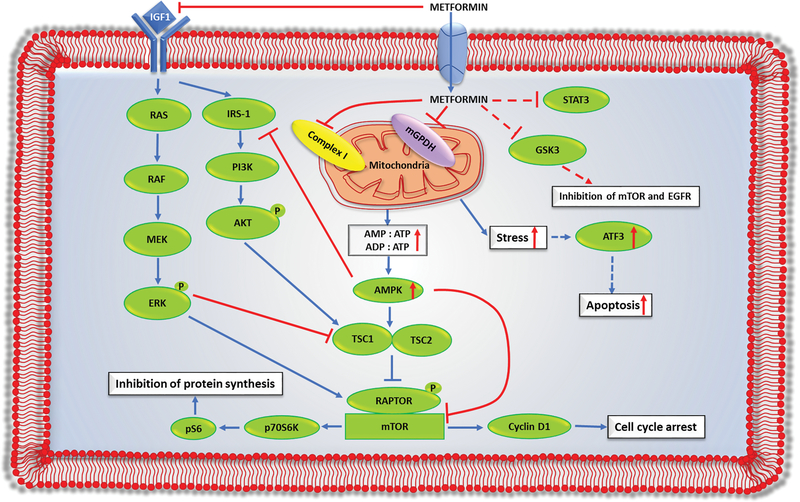Figure 2.
Mechanism of action of metformin in endocrine tumors: metformin is a negatively charged molecule that enters the cell through organic cation transporters (OCTs). After entering the cells, it can inhibit tumorigenesis through the following pathways. First, metformin, through its direct action, can inhibit complex 1 or mGPDH, either alone or together, to inhibit oxidative phosphorylation (OXPHOS). This inhibition of OXPHOS lowers the energy production (ATP synthesis) within the cells, which creates cellular stress in cancer cells. The reduction in ATP production increases both the AMP:ATP and ADP:ATP ratios, which activates AMPK. Activation of AMPK, in turn, leads to activation of tuberous sclerosis complex ½ (TSC ½), which inhibits the mTOR pathway. Second, metformin can inhibit insulin or insulin-like growth factor-1 (IGF-1) mediated activation of the RAS-MEK-ERK and PI3K-AKT pathways, which results in the inhibition of the mTOR pathway. Third, metformin-mediated activation of AMPK can inhibit phosphorylation of insulin receptor substrate-1 (IRS-1). IRS-1 is downstream of the IGF-1 pathway and upstream of the PI3K-AKT pathway. Inhibition of IRS-1 activity hampers AKT phosphorylation, which causes activation of the TSC complex and inhibition of the mTOR pathway. Last, metformin has other targets including STAT3, GSK3, and ATF3 in endocrine cells, but the exact pathway by which metformin targets these genes/proteins are not known.

